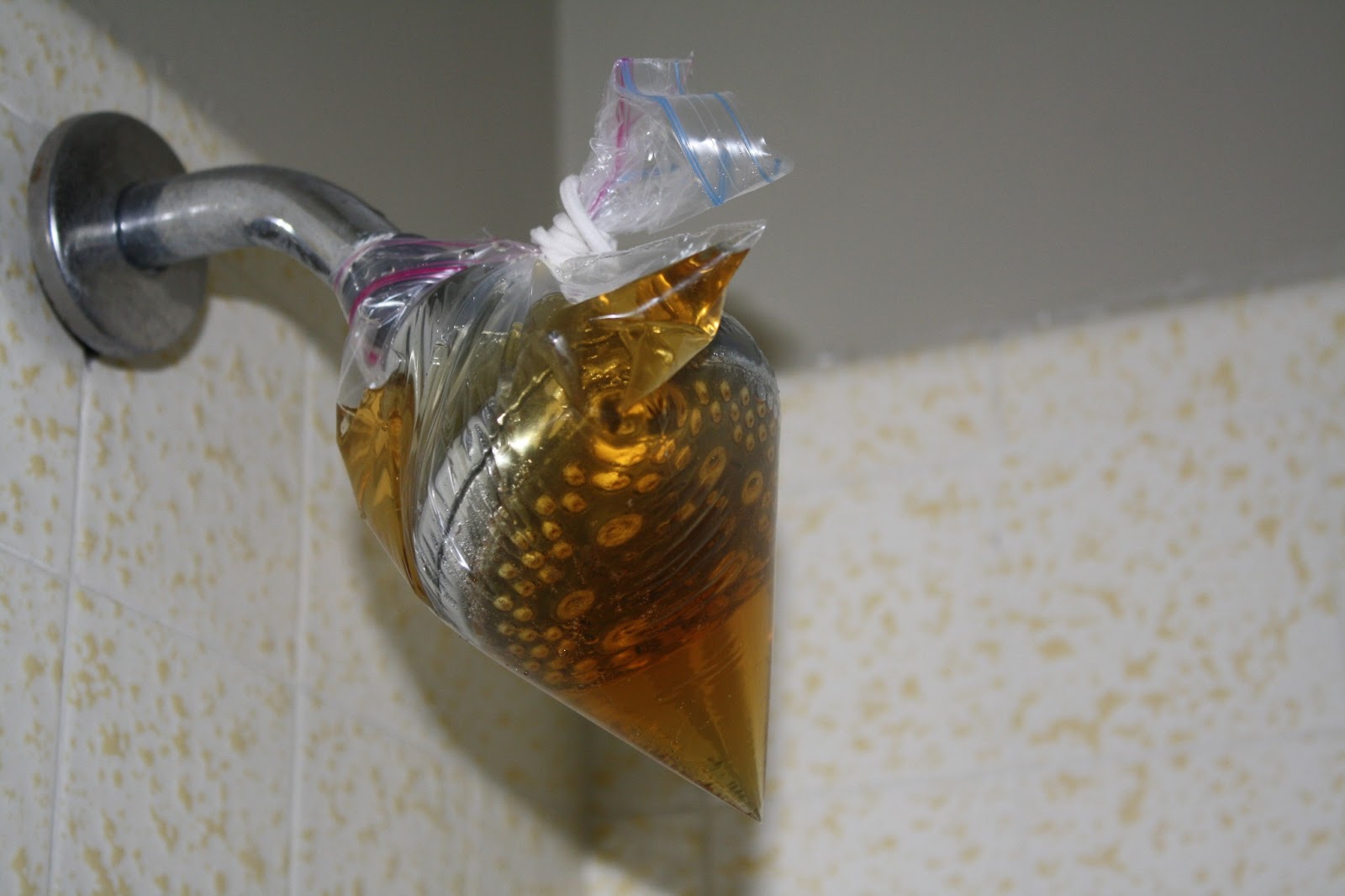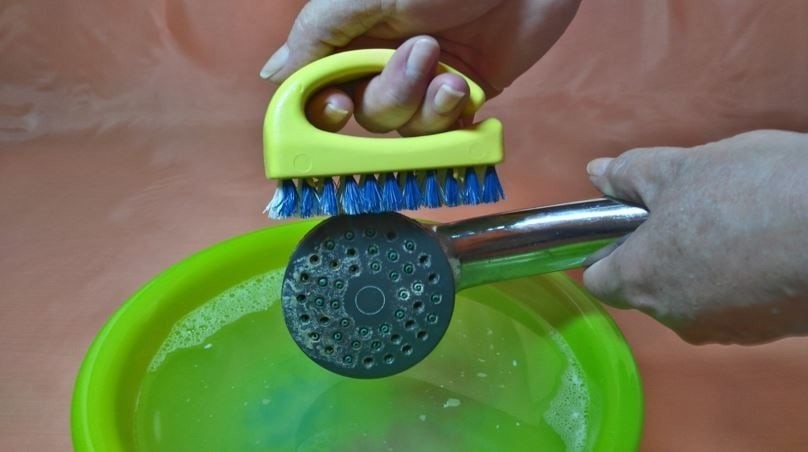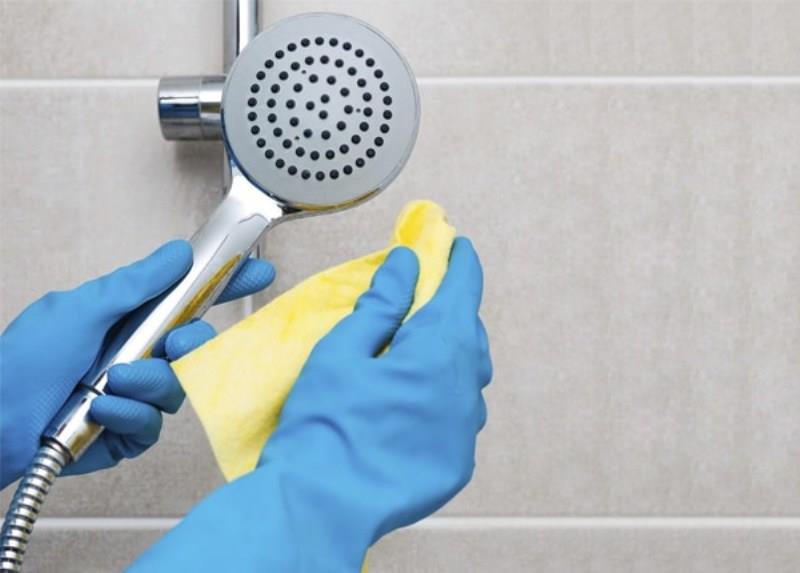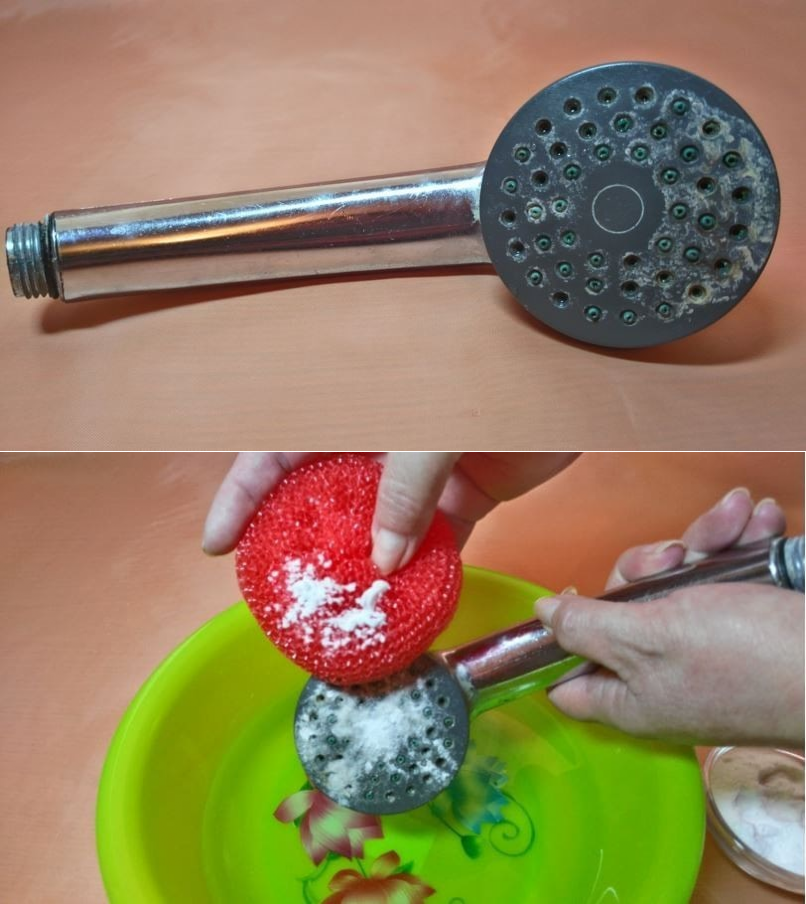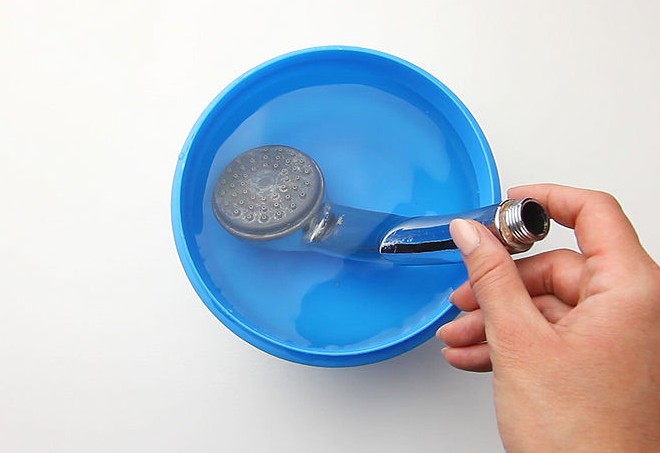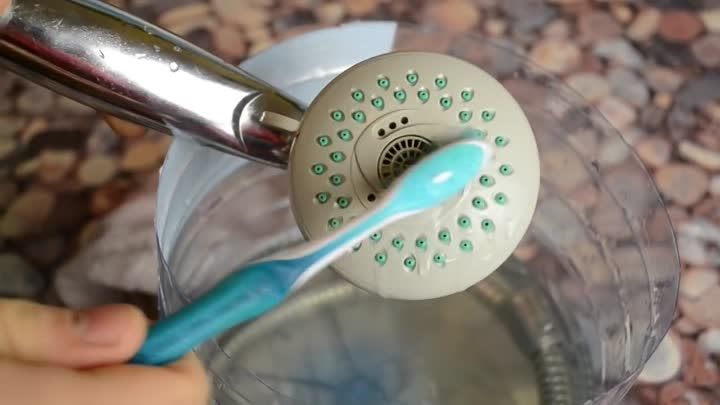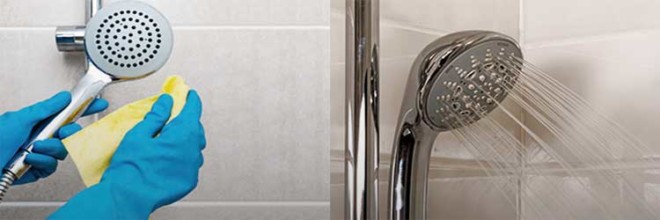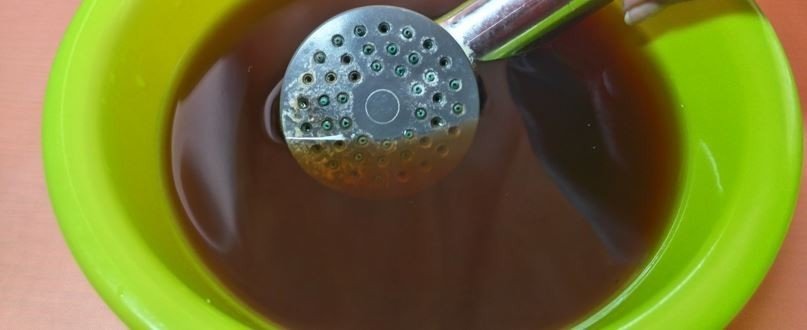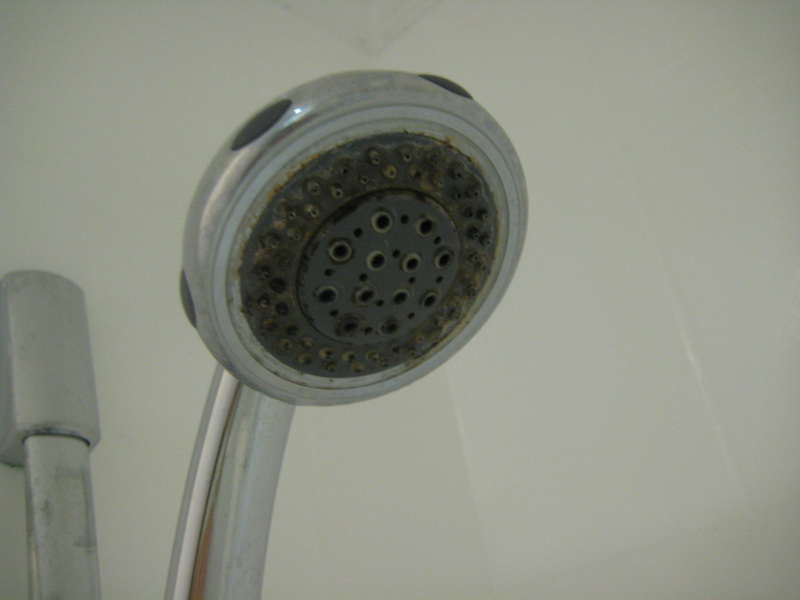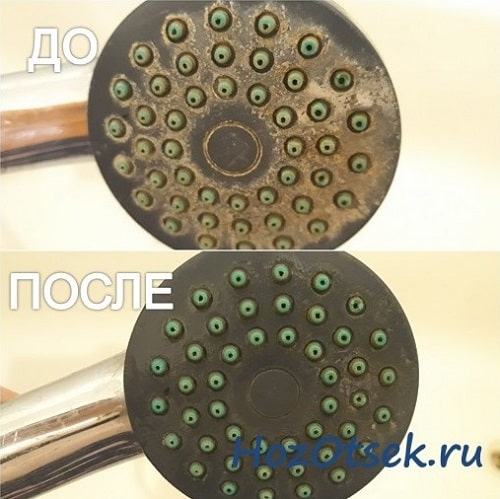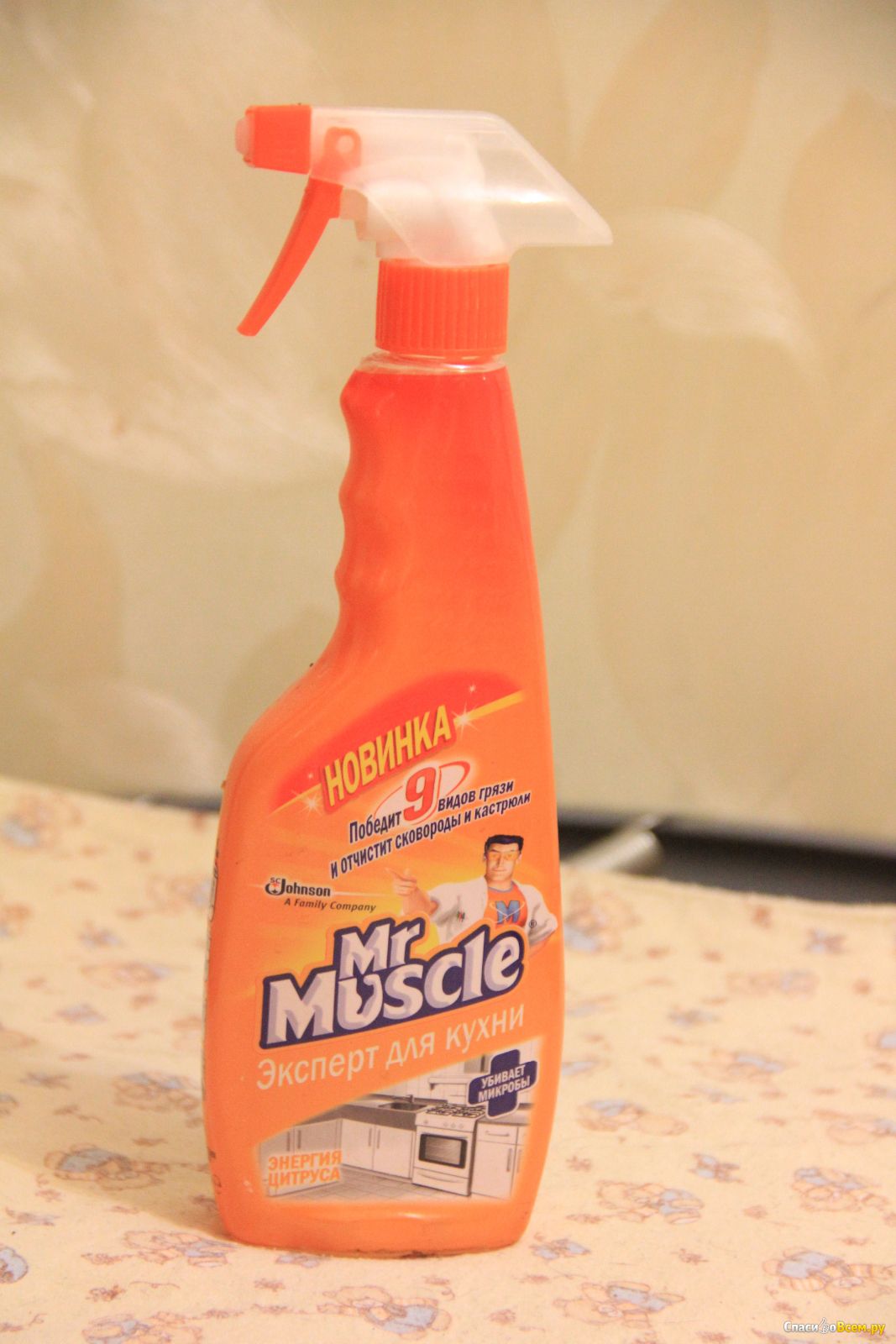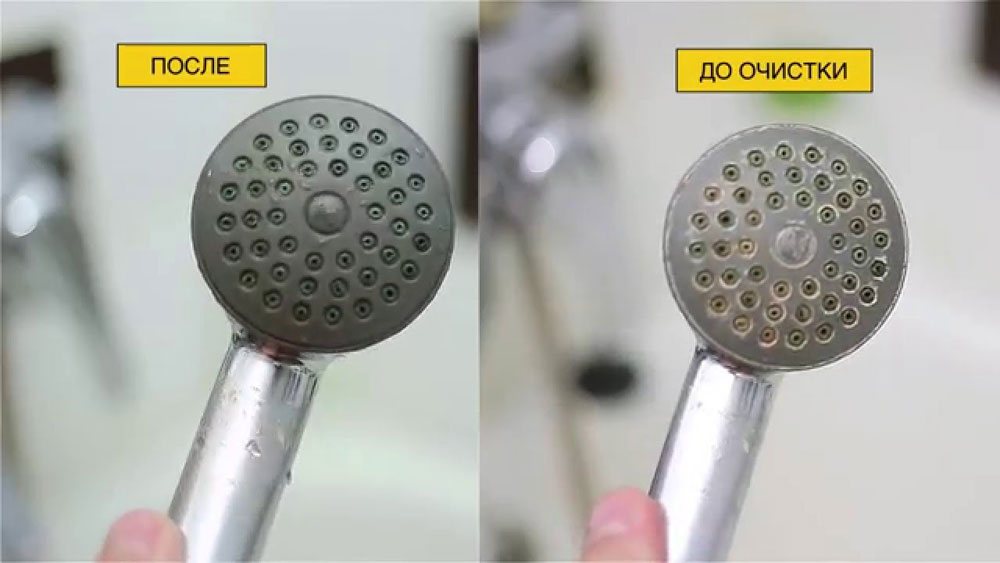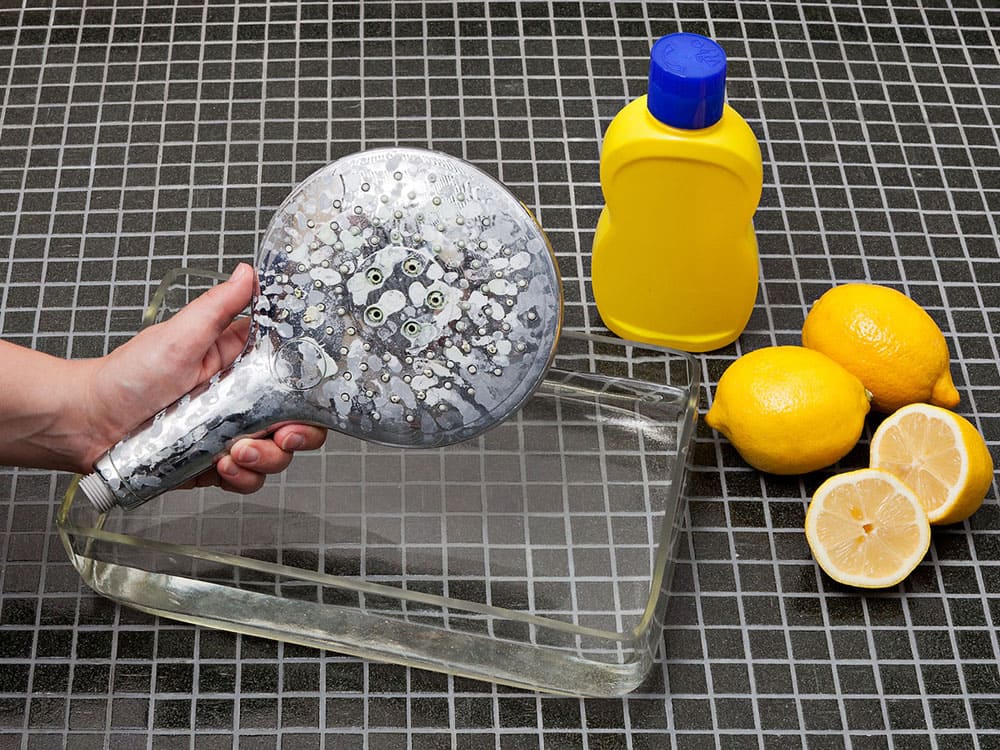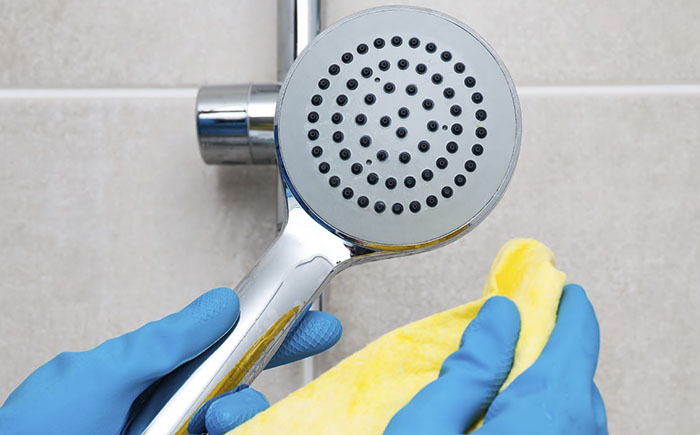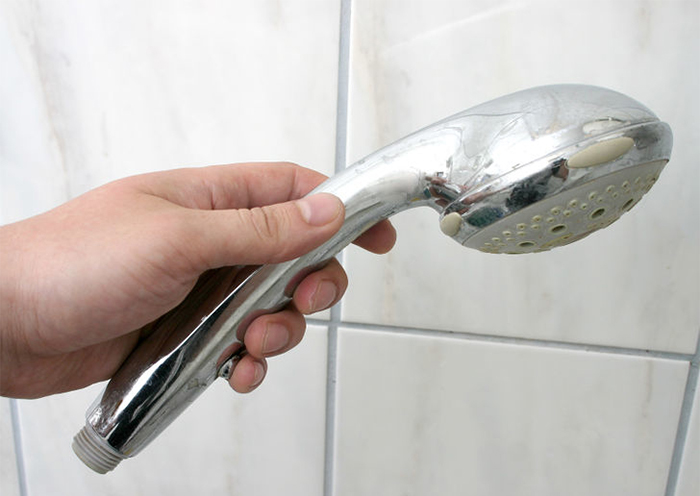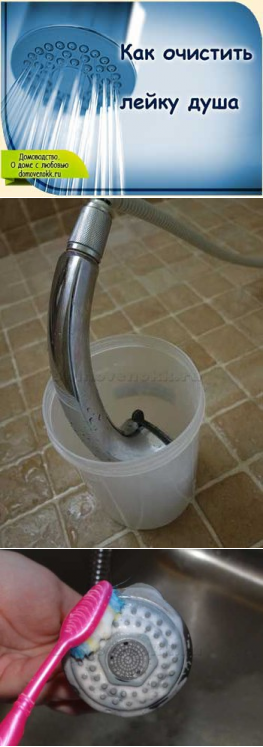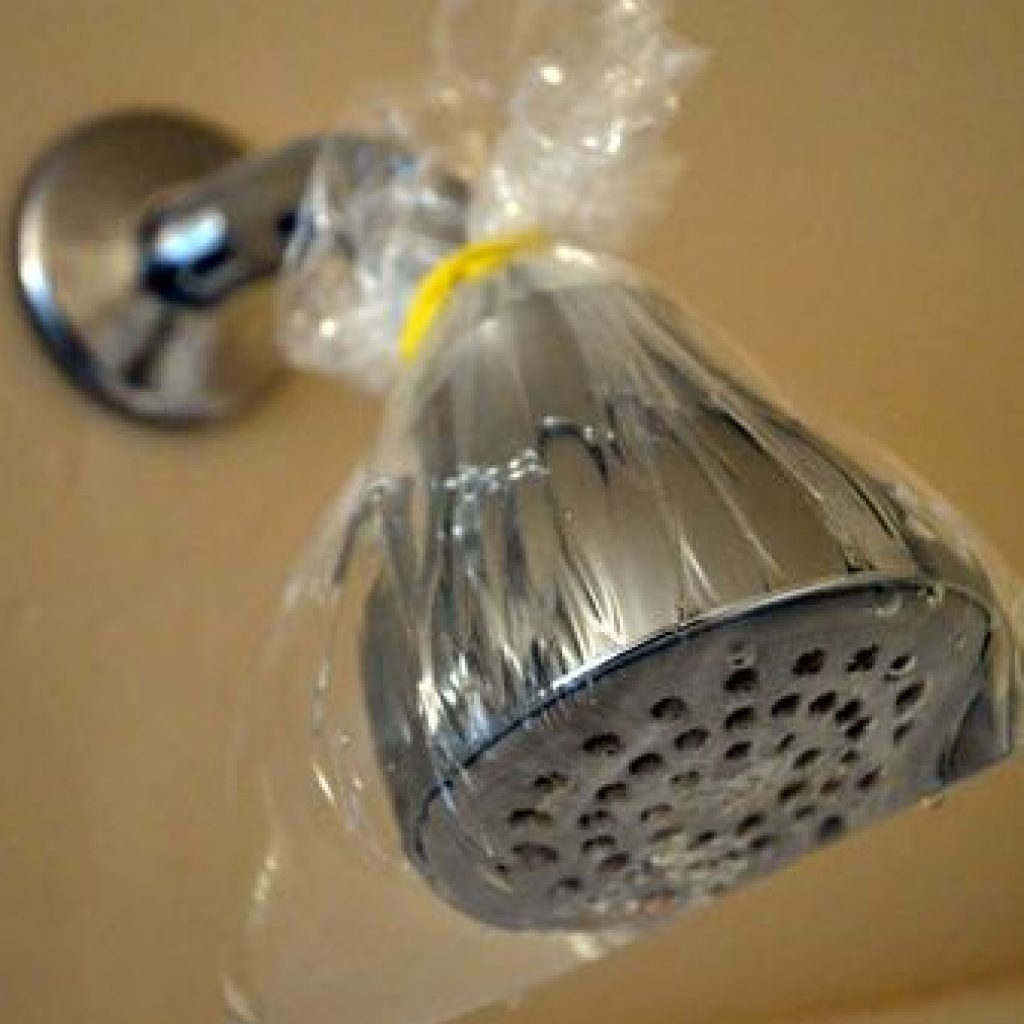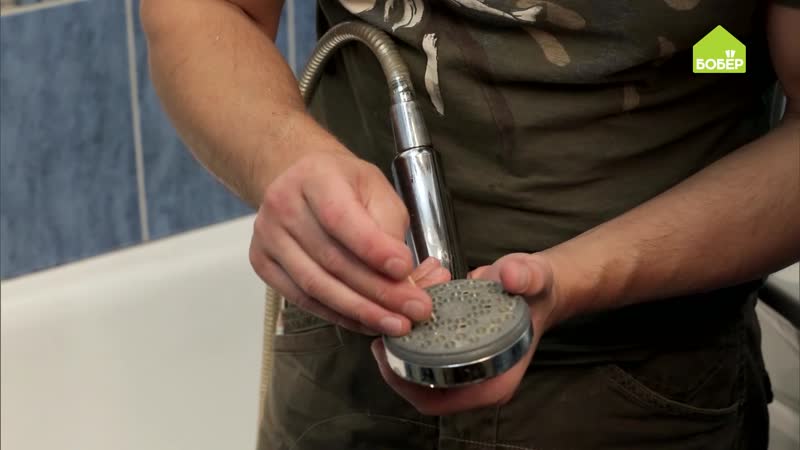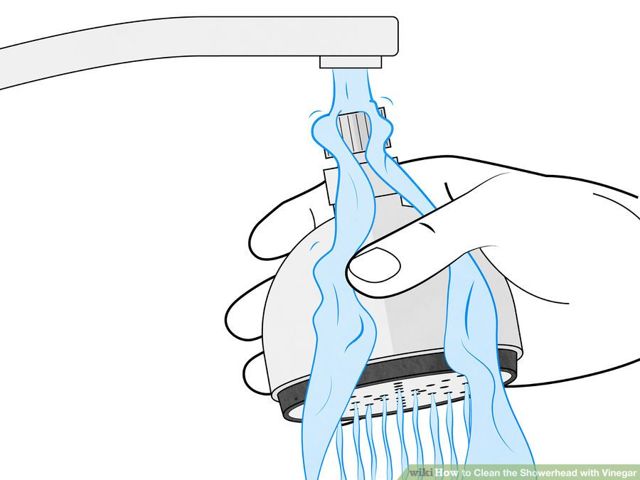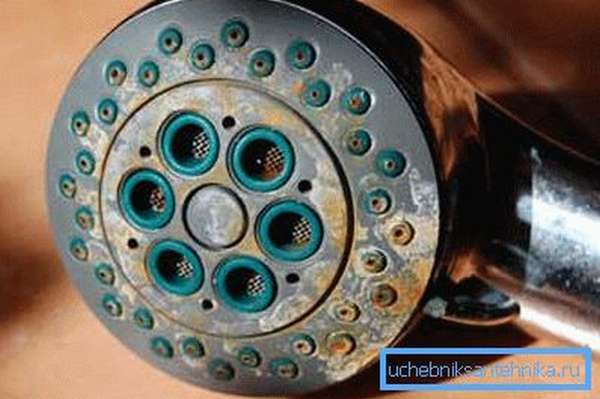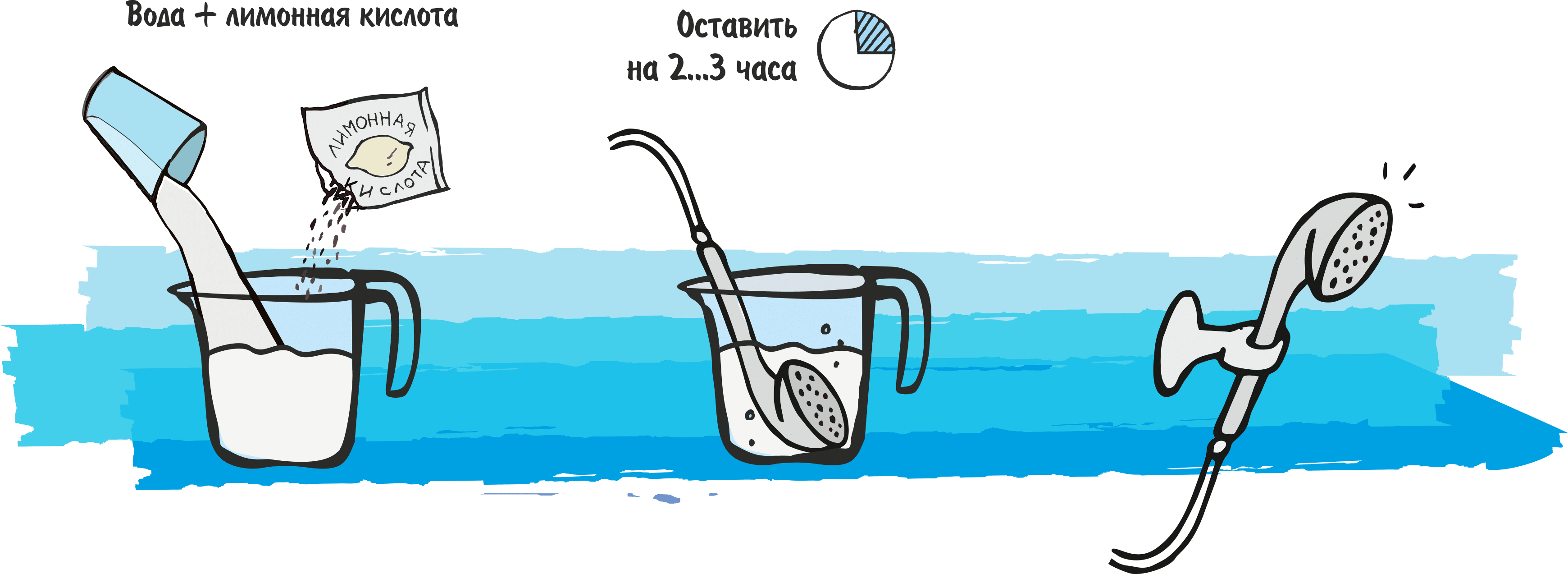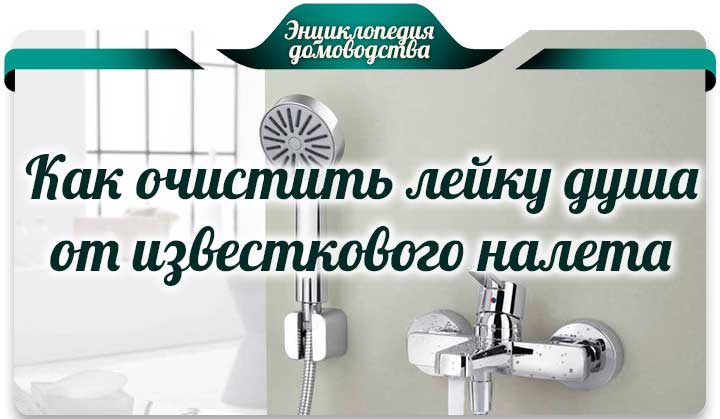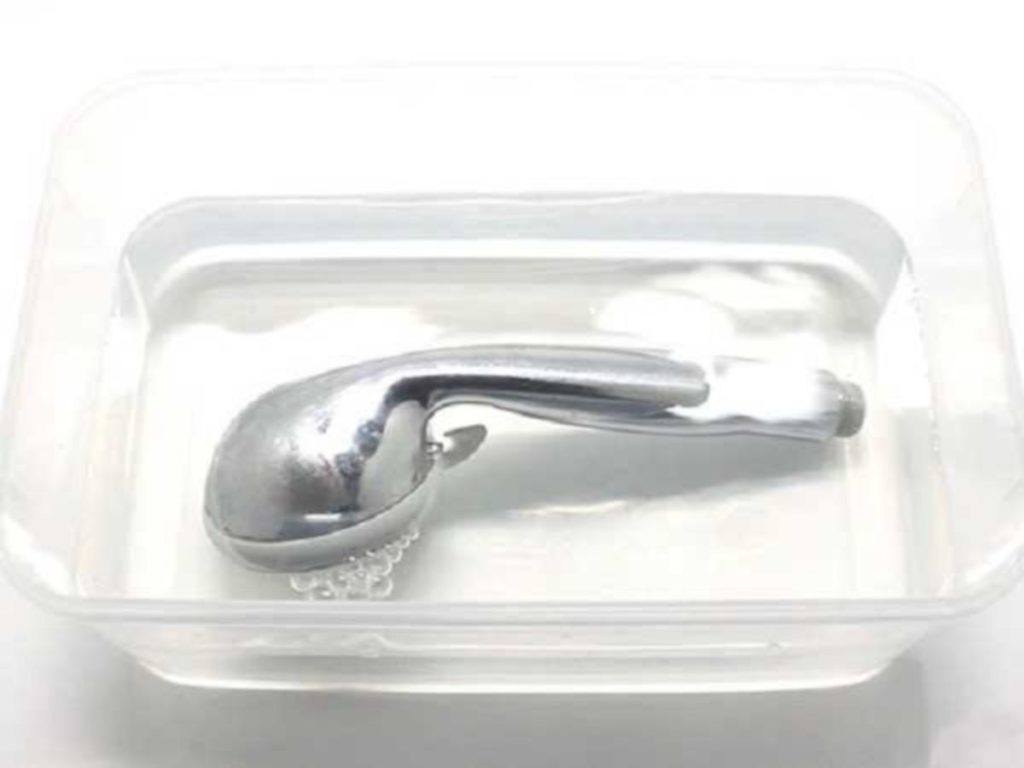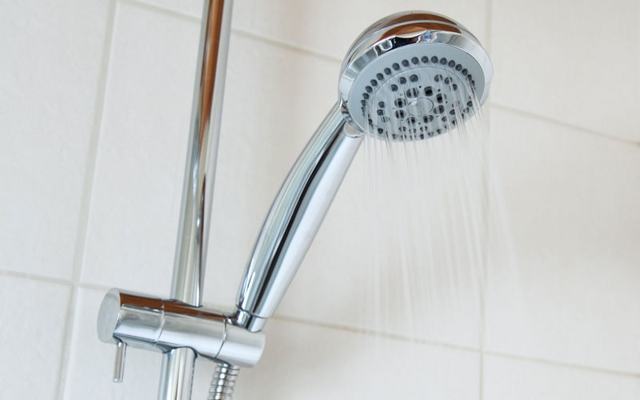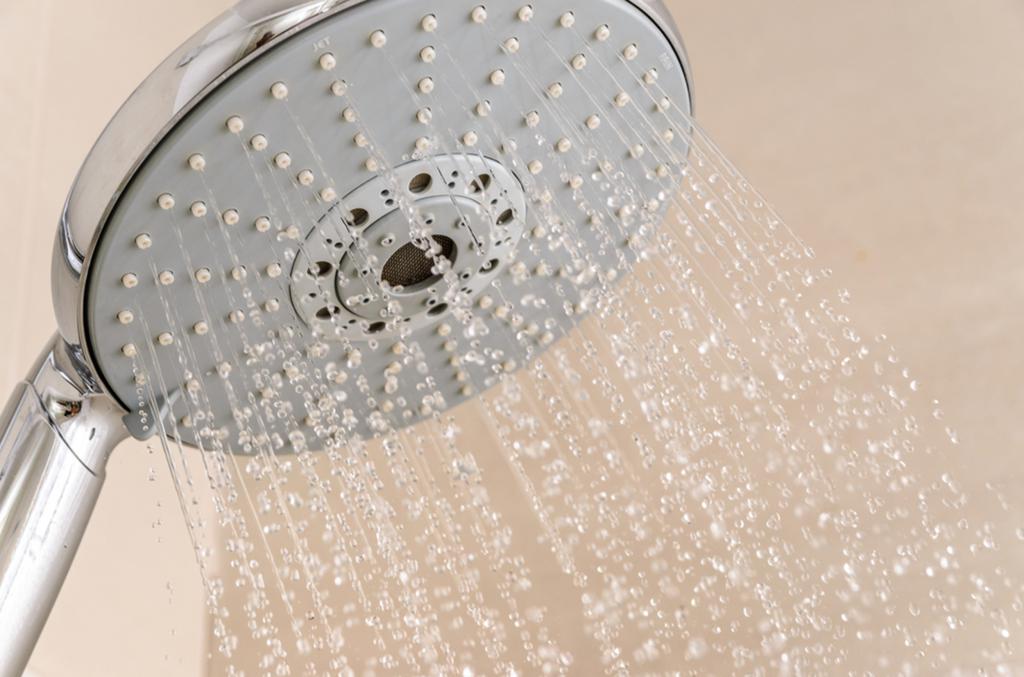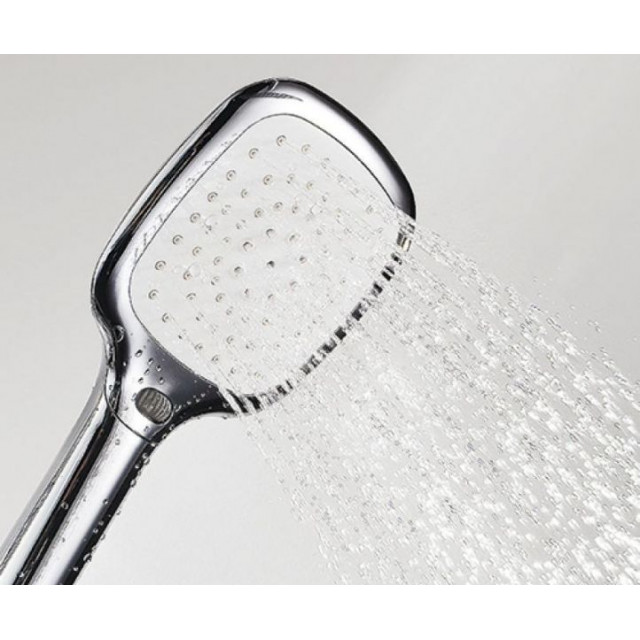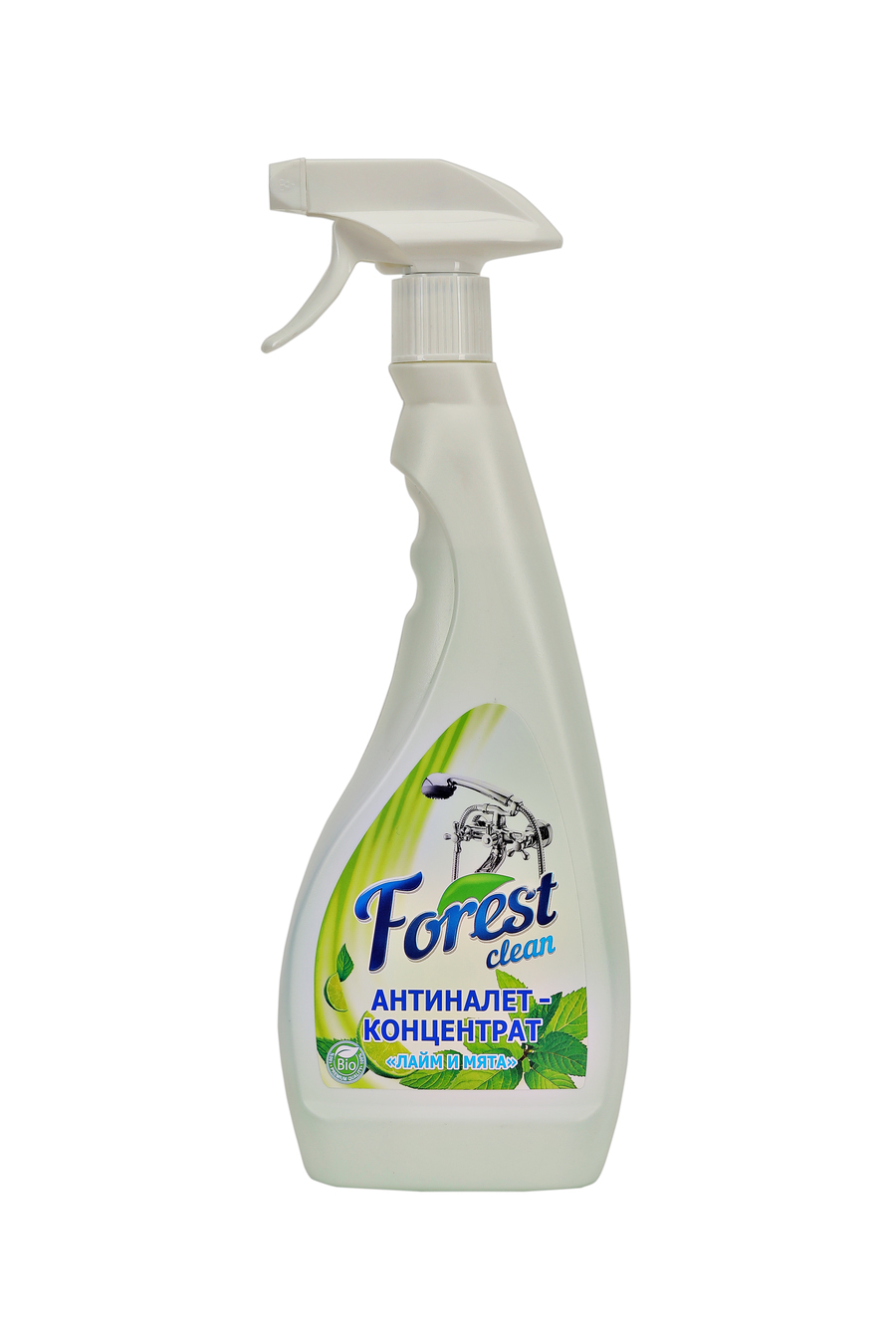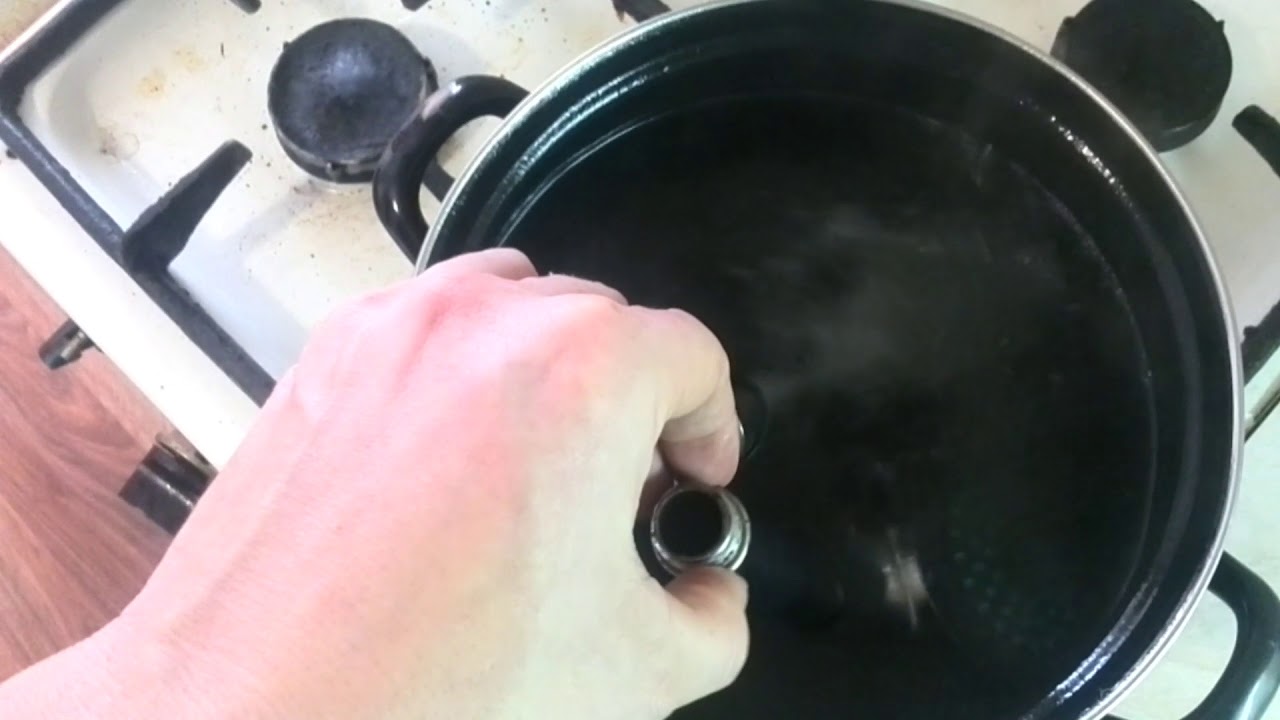Household chemicals
Professional tools are often more effective than the available components. There is a list of the most commonly used household chemicals that are effective in removing limescale.
| Means | Processing method |
|
Dressing duck |
It is not recommended to clean the faucets with a dressing duck, since it can leave black stains, from which only GOI paste will then save. |
|
Mister Muscle for plumbing |
It is one of the most effective products that quickly and easily removes plaque on the mixer. It is enough to apply a small amount of the product with a spray and leave for 15 minutes. |
|
Cilit bang |
Another specialized composition that will not harm the mixer if used strictly according to the instructions. |
|
Sarma |
Dilute the product to a powdery state and apply on surfaces with limescale. After 20 minutes, wipe all surfaces with a soft sponge and rinse off the remaining powder with water. |
|
Anti-scale |
The recipe is simple:
|
What tool do our experts use?
Masha Klimova
Housewife experience 15 years
I usually use Cilit Bang. Just apply, wait a couple of minutes and rinse, after that be sure to wipe dry, for example, suede super-absorbent Miracle.
Folk cleaning methods
For cleaning the mixer, it is not recommended to use aggressive compounds containing acids, as well as chlorine. There are several popular recipes offering to get rid of plaque and rust with the means that every housewife has in the house.
Removing limescale on the tap with vinegar
You need to take:
- gloves;
- 7% vinegar;
- an old toothbrush;
- wire or paper clip;
- a bowl with a rag to remove deposits.
- Remove the shower head first. If this is difficult, use a pair of pliers, but be sure to wrap the reflective surface of the plumbing with a cloth before doing so to prevent scratches. If possible, remove the shiny lid and leave only the shower head.
- Place the shower head in a bowl of vinegar heated to 50 degrees. Remember to wear gloves.
- If the mixer cannot be removed, experienced housewives advise pouring vinegar into a plastic bag and putting the mixer there. In this case, the shower nozzles should be completely immersed in the vinegar. Secure the bag with a paper clip or wire. Soak the plumbing in vinegar for 15-20 minutes.
- After soaking, remove limescale deposits with a stiff-bristled brush.
- Next, rinse the treated plumbing in hot water.
This simple folk recipe will help remove limescale from the surface of your shower head.
To remove limescale deposits from the mixer, you can use the following tips from housewives:
Lemon in the fight against lime
- Cut the lemon rind with a knife.
- Rub the mixer with it.
Over time, the lemon juice will dissolve the lime, and all you have to do is rinse the area with water and dry it with a towel.
Baby oil against lime and soap deposits
Use baby oil to remove limescale on the tap or soap deposits from the mixer tap.
- Apply the product to a soft cloth and scrub the stained areas with it.
- Then polish the surface with a dry towel.
The use of vinegar essence
Don't confuse it with vinegar; you need exactly acetic acid with a concentration of 70%.
- Dilute the essence in water at a ratio of 1:20.
- Depending on the density of the limescale, the temperature of the solution will also rise.
- We advise you to wash the mixer with a metallized coating with vinegar diluted in boiling water.
Lime control with oxalic acid
Often housewives use oxalic acid to remove or wash off lime deposits.
- Before use, the acid must be diluted in warm water. The solution itself should be 5% (take 20 parts of water for 1 part of acid).
- Apply the solution with a brush to areas of the shower head affected by plaque and hold for 3 hours.
- Next, rinse off the remaining plaque with water.
Soda
Common baking soda is used as follows:
- dilute soda in a little water;
- apply the resulting gruel to the areas of the crane damaged by plaque;
- wait an hour and rinse the surface with warm water.
Helps only with fresh plaque.
Salt
Table salt must be dissolved in water to a mushy state. Then put on a napkin and rub the soiled areas. Wipe off after 20 minutes.
Laundry soap
It should be 72% soap. Algorithm:
- grate a third of the piece on a coarse grater;
- dilute with hot water to a liquid cream;
- treat the surface of the mixer with the composition;
- leave for 20 minutes.
Then rinse with water. To enhance the effect, you can add a tablespoon of baking soda to the cream.
Lemon acid
It can be natural lemon juice or powder, but it is also natural. Dissolve in water in a ratio of 1: 1.
- apply from a spray bottle;
- leave for 45 minutes.
Wash off.
Window cleaner
In addition to windows and mirrors, these compounds are excellent in removing limescale. It is better if ammonia is among the components.
A great way, but only works for fresh plaque. These wipes do not scratch the chrome surface.
Coca Cola
The recipe has been tested by many housewives:
- wet a piece of cloth in soda;
- put it like a compress on a mixer;
- wait 20 minutes;
- wash the surface from the remnants of soda and plaque.
At the end of the procedure, wipe the entire mixer with a dry cloth.
Ammonia
This is a wiper method. Add ammonia to it. Then, with a spray, treat the entire mixer with the composition and after 20 minutes rinse everything off with warm water.
Is it really a watering can
The new faucet in the bathroom always delights with invigorating, elastic streams that give incredible pleasure to the body. But over time, something changes, and taking a shower is no longer so pleasant. The streams coming from the shower head are getting smaller, they can change direction, and sometimes the water just runs off in a dull stream.
We recommend that you familiarize yourself
In this case, the first step is to figure out what caused the weakened pressure:
- 1 Turn on the water supply in the shower mode and visually assess the throughput of the device.
- 2Turn off the water and disconnect the shower head from the hose using a Swedish wrench.
- 3Switch on the water again: if the stream is strong, it means that it is the watering can, if the pressure is still weak, then the shower hose is clogged.
Cleaning the shower hose is a hassle, and it's much easier to get a new faucet in this case. However, if the reason is a change in the throughput of the equipment in the watering can, you can clean it of limescale and enjoy an invigorating shower again.
Cleaning the shower head must necessarily begin with familiarizing yourself with its device. If the instructions for the equipment have been preserved, it is very useful to study it.
So, when starting to clean, it is important to take into account:
- whether the shower head is unscrewed from the hose or not;
- whether she understands;
- a watering can is installed on a hose or attached directly to the wall.
The easiest way to clean your shower head is if you can detach it from the hose. To begin with, consider the process of removing limescale from just such a device.
More efficient way
How to descale a shower head so that it literally shines? This is very easy to do. You will need a whole pack of citric acid for 50 g of water.Prepare a convenient container for cleaning. A small saucepan or jar will work for this.
We unscrew the watering can itself from the hose and disassemble it according to the principle that was described above. Carefully remove the mesh, simultaneously removing scale with a sharp object
Do this very carefully to avoid damaging the gasket. After all the components of the watering can are disassembled, it is necessary to bring the water in the kettle to a boil.
We place the parts in an empty jar, pour out the contents of a sachet of citric acid and fill it all with boiling water. For a moment you will see the process of the so-called "quenching", bubbles will stand out. It reacts hot water with acid. It is at this moment that the scale begins to actively disintegrate.
Leave the container for about 20 minutes until the liquid cools down a little. Prepare an unnecessary toothbrush to get on with cleaning your shower.
After softening the plaque, we start cleaning the components of the watering can with a toothbrush. It is not worth putting in excessive effort, everything is cleaned up with ease. When the cleaning process is over, rinse the parts of the watering can under warm running water and put all the components together.
We assure you that after this procedure you will not distinguish your shower from a new one.
So now you know how to clean the limescale from the shower head with your own hands. As you've probably seen, it's pretty simple to do this. By the way, a product called "Anti-scale", which can be purchased at any hardware store, is also ideal for cleaning.
How to properly clean the shower
The peculiarities of cleaning shower cabins are in the variety of materials used in this plumbing fixture, and, accordingly, the need to choose the appropriate method and means for cleaning each of them. Most often, the following materials are used in the manufacture of hydroboxes and shower enclosures:
- The pallet is made of acrylic, enamel or ceramic elements, natural or artificial stone;
- The material of the doors is tempered glass or various types of plastic;
- Chromium-plated steel is used for the manufacture of the faucet, shower head, elements of the hydromassage system, handles and door hinges;
- If the doors are made on a frame, then its material is represented by a painted aluminum profile.
Cleaning with improvised means
Vinegar. It can be used to remove any type of dirt, in particular limestone deposits.
However, it is important to dilute the vinegar essence 70% in water in order not to damage the coating of the watering can. For this, there must be a consistency of 1 in 20
In the case of using 10% table vinegar, it will be enough to dilute it with water in a ratio of 1 to 1. To achieve better efficiency, you need to heat the resulting solution. After that, it is necessary to lower the watering can into the resulting solution and after a certain time remove, brush and rinse.
Lemon. Since lime is afraid of any acid, citric acid can also be used to eliminate it. To do this, in one liter of water, you need to pour up to 50 grams of citric acid, and then place a watering can. You can also use fresh lemon juice. After a certain time, the watering can also needs to be cleaned and dried.
Baby oil. It may sound strange, but the oil for children contains those ingredients that allow you to dissolve limestone deposits. To do this, you need to take a rag, soak it with this product, and then process all the holes of the watering can with it, leaving it for a couple of hours. After this time, it is necessary, using a brush, to remove all residues of plaque and rinse with water.
Oxalic acid. Such a tool is very aggressive, so it should be used only in cases where conventional methods simply cannot cope. You can buy it at regular pharmacies.So, for one liter of water, it is necessary to dissolve a couple of tablespoons of acid, and then place a watering can in a container with the solution. If sufficiently large or old elements of limestone deposits are present, the concentration of oxalic acid must be increased to eliminate them. When the soaking process is over, you need to clean the nozzles using a regular toothbrush. This will remove even small particles of plaque.
Baking soda, vinegar, and ammonia. This kind of means, in addition to allowing the cleaning of plaque in the form of lime, also eliminate the possible appearance of various fungal spores. To create the necessary solution, you need to take half a glass of vinegar, add a few tablespoons of soda there, as well as 150 ml of ammonia. This is all mixed, after which it is heated to 50 degrees. After that, the watering can is lowered into this solution and left there for one hour, then it is rinsed, and the device is ready for use.
It is important to know: regardless of how the watering can was cleaned, after that it must be rinsed with plenty of cold water.
In order not to have to get rid of limestone deposits, it is necessary to carry out preventive measures in time. In this case, the plumbing will work for a long time.
How to easily remove plaque from plumbing, see the tips in the following video:
Most popular store cleaners
Choosing effective shower cleaners is a daunting task. And it is not easy in that there are a lot of all kinds of funds on the market today. And your eyes just run up when you need to choose one thing. But, nevertheless, there are time-tested and proven products, such as:
- Dishwashing detergents - effectively removes soap deposits. In addition to liquid formulations, in some cases, "Komet", "Pemolux" and other powders are acceptable.
- The so-called fungicides are means for removing black plaque, mold.
Toilet Cleaners - Can help clean up, for example, the Toilet Duck stone tray can be a lifesaver for those with very hard water.
Means for combating scale in teapots. An anti-scale solution will help get rid of limescale.
Cleaning products for mirrors and glasses
It doesn't matter what it will be - "Mister Muscle" or some other composition. Many of them are excellent at cleaning windows and mirrors.
Melamine sponge
It is an almost universal product that can effectively remove dirt.
Popular detergents that can be used to clean the hydrobox:
"Akrilan" is a special product designed for cleaning acrylic surfaces.
Cilit is a powerful product that cannot be used on natural stone or aluminum surfaces. Poisonous enough
Requires extreme care in handling.
Tilex is a prophylactic agent. It is used after taking a shower to prevent the formation of plaque and mold.
- Cif is a well-proven remedy. Can clean acrylic surfaces.
- "Sanelit" - has a pungent smell, but at the same time it copes well with the tasks. Suitable for cleaning acrylics.
- Aron - effectively cleans the glass of the hydrobox. Can be purchased at a reasonable price.
- Sarma, Domestos, O. C. Plus and many other great products.
Means and methods of cleaning
The very first elements that take the blow of the resulting plaque are hydromassage nozzles and shower heads. There are several ways to clear them:
- Use a commercially available cleaning product for chrome-plated items.
- You can treat the surfaces with a warm solution of "Antiscale" (or other means that fight scale in teapots).
- Apply warm vinegar to the surface, wait 10-15 minutes, and then clean it with a soft cloth.And clean the clogged holes with a regular sewing needle or toothpick. If the layer of plaque is large, then you can make a "lotion" with vinegar: wet a cloth, attach it to the plumbing, cover it with cling film or a plastic bag and "forget" about the watering can for a while (up to half an hour) so that the vinegar does its job, and then rinse everything with plenty of water.
Walls and door
The material of the walls and doors of the cab is usually plastic or glass. Cleaning the glass doors is perhaps one of the simplest tasks in cab cleaning. Here you can use a variety of glass cleaning compounds.
The main thing is not to use abrasive compounds and hard washcloths, sponges. Otherwise, you can easily scratch the surface. For work, rags and napkins made of non-woven materials, old rags, flexible rubber scrapers are best suited.
For those who still prefer folk remedies, it is possible to prepare a vodka (alcohol) composition in a 1: 2 ratio (1 tablespoon of vodka to two tablespoons of water) or dilute the ammonia with water. Such simple mixtures perfectly remove dirt from glass.
Do not forget to clean plastic surfaces, as they tend to "accumulate" dirt and darken. It is best to clean plastic surfaces with products that do not contain formaldehyde, acetone, alkalis and solvents.
If the walls of the shower stall are lined with tiles or just tiles, then you can clean them with soda or "Pemolux", "Comet"
Particular attention should be paid to tile joints. It is a favorite spot for mold and mildew.
It will be useful to treat them with fungicides.
Pallet
The pallet can be made from various materials. The most "capricious" in terms of cleaning is the acrylic representative. You cannot wash it with the first available means. It will deteriorate quickly. There are special cleaning agents for it (the same as for acrylic bathtubs).
But if it is not possible to purchase them, then you can use the most common toothpaste. It does not have the abrasive properties of soda, but it is very effective in removing plaque. And the most common laundry soap also does a good job with the task.
The most unpretentious cleaning is enamelled and tiled pallets. They can be cleaned even with powdered products, without fear of "scratching"
When processing a tiled surface, attention must be paid to the seams so that mold does not appear there in the future.
Stone pallets are also unpretentious in terms of cleaning. They usually do not accumulate as much dirt as on other surfaces. But if the need arises, it is worth cleaning them with means specially designed for these purposes. To return the stone to its former brightness, use means for cleaning the toilet bowls.
Required tools
To care for your shower stall, you need tools that will ensure high-quality, yet gentle cleaning, as well as save time and energy. In order not to damage the surfaces, they do not use hard, especially metal, brushes for cleaning, preferring soft ones.
Soft cloth and microfiber
Solutions and mixtures are applied with a cloth to soften deposits, a cloth soaked in the solution is left for some time to act. The same tool is used for the subsequent removal of detergents, wiping the walls and the pallet, wiping the surfaces dry with a dry cloth. The microfiber cloth perfectly removes drops, which will help to avoid dirt marks at the point of drying.
Spray
Used for spraying cleaning products, including homemade ones, on walls, doors, pallets and in hard-to-reach places. Suitable for liquid mixtures only.
It is convenient to use a rubber scraper to remove plaque from glass walls. Optimal because it does not scratch.
Foam sponge
The sponge is used to apply cleaning agents, wipe off dirt with the coarse side after exposure, and rinse off residues. The soft sponge will not damage the surface of the shower stall.
Toothbrush
Relatively soft bristles are suitable for rubbing small dirt, it is convenient for her to handle seams and joints. On large surfaces, scrubbing the surfaces is laborious.
The reasons for the appearance of plaque
Plumbing plaque appears due to the increased hardness of the water, which is determined by the concentration of mineral salts. As a rule, calcium and magnesium salts predominate in the water supply system. Mixing with soap suds, they leave white marks and streams on surfaces. With a high content of iron salts in water, a yellow precipitate is formed.
But the unkempt appearance of the tap is only an outward manifestation of the problem. Limescale also builds up on the inner surfaces of mixers - there is always some water there. In advanced cases, a water stone forms on the moving parts of the structure, which disrupts the operation of the cranes and can disable them. In this case, the rate of formation of deposits directly depends on the frequency of use of hot water. At temperatures above 70 ° C, salts settle much faster, forming scale. This problem is usually common with boilers and washing machines, but faucets can also be affected. Therefore, it is necessary to clean them in a timely manner, not only outside, but also inside.
Cleaning types
There are several types of booth care:
- Regular cleaning involves doing certain things after each visit to the shower. It is necessary to thoroughly wash off the soapy foam, rinse the booth with hot water and then cold water. Then wipe the surface with a rag. If you do not ignore regular cleaning, then subsequently washing the shower will be much faster.
- Periodic cleaning is carried out at intervals from one week to a month, depending on the attendance and contamination of the cabin. At this stage, you will have to use additional tools that are able to cope with more serious pollution. Various detergents, sponges and brushes will be used. Rubber glass scrapers work well for cleaning the shower area. After the procedures, it is necessary to carefully wipe the surface of the booth with a dry cloth, without leaving water drops.
- Thorough cleaning may not be required if the previous two types of cleaning are thoroughly carried out. The need for such cleaning arises when the shower has not been used for a long time or it is very dirty. In the process of washing, it is necessary to use strong means and be sure to protect your hands with rubber gloves.
Why does limescale appear on the shower head
Plaque deposition occurs due to the excessive concentration of calcium, magnesium, mineral, lime substances in the water.
Water, constantly passing through the pipe, watering can, falling on the surface of the shower, leaves calcareous microparticles, which subsequently accumulate, form a hard-to-wash plaque. Lime of a whitish, yellowish color worsens the appearance of the sanitary ware, its technical characteristics (clogging of the holes, leading to obstruction of water).
Lime dirt can become clogged with the shower head and the water supply hose.
Household chemicals
Special household chemicals will help you quickly and easily wash the shower stall. When choosing, give preference to sprays, gel or liquid products - they will not scratch the surface, but at the same time they will effectively get rid of plaque and stains. The most popular remedies include: Cif, Mister Muscle, Sanelit.
Specialized household chemicals will help to keep the shower stall clean and shiny. Before use, make sure that this or that product is suitable for the surface to be cleaned.
You can deal with dirt with melamine sponges. They are easy to use and, according to the reviews of the hostesses, they effectively cope with the task assigned to them.
Cleaning instructions:
- Soak a sponge in water and squeeze well.
- Wipe all surfaces thoroughly to remove dirt.
- Dry the cabinet with a microfiber cloth to remove any remaining moisture.
Means for cleaning shower heads from scale
Sometimes chemical detergents are not able to cope with limescale contamination or they can damage the surface. In this regard, many ways have been invented to clean products from plaque, limestone with what is found on the shelves in an apartment or house for almost every person.
Vinegar:
- best used at 7 or 9 percent. You will need a cellophane bag and any adhesive tape (tape, insulating tapes) or tight elastic band;
- remove limescale deposits with gloves, vinegar can cause irritation or leave burns;
- the essence solution must be heated to a temperature of 50 degrees, then place the watering can in a heated product;
- replace the container with a bag that is wrapped around the watering can, secured with a tape or elastic band.
You need to monitor the amount of vinegar used: a little liquid will not give a cleansing result.
The shower net and shower head should be covered with vinegar. Depending on the degree of contamination, it must be immersed in the solution for one night, then the lime and fungal deposits will completely disappear.
Conditions for using citric acid:
- To clean in this way, you need several packages of citric acid, at the rate of 1 sachet per 50 milliliters of water, a saucepan or other container.
- Having unscrewed the shower head from the hose, disassemble it, place the elements in a deep dish, cover with a bag containing a bag, pour boiling water.
- Bubbles will begin to vigorously stand out - the reaction of the interaction of boiling water and acid, at the time of which the process of active destruction of lime, fungal plaque occurs.
- Leave the watering can in the solution for half an hour until the contents in the dishes have cooled down, then take a medium-hard brush and gently clean the surfaces.
- After carrying out the actions, rinse all parts with running water, assemble in the correct order.
You can use a household remedy for descaling in teapots - Anti-scale.
Laundry soap will help you clean your shower accessories. Having bought the simplest soap, grate it into a bowl, add 1 teaspoon of baking soda, a small amount of hot water, mix. Dip a cloth or sponge in the resulting mixture, thoroughly clean the watering can, hoses, and other structures that make up the shower system from lime and fungal deposits.
You can use a brush and toothpicks to clean the shower head holes. After the procedure, rinse the surfaces to be cleaned with water.
You can clean the shower from lime stains using homemade recipes:
- dipped lemon cut in half in salt with a cut, then wipe, like a sponge, the surface of the watering can;
- prepare a solution of oxalic acid with water in a proportion as desired and the degree of contamination, apply on the surface, leave for several hours, then rinse;
- you can use soda or a mixture of ammonia with hydrogen peroxide (you can clean the shower room from lime, rusty deposits).
The exposure time is determined by the condition of the contaminated surfaces: the time frame varies from two hours to half a day.
There are many effective formulations that help clean plumbing products. They are different in composition, strength of action, concentration of components, form of release (gels, creams, sprays). A few store-bought products to clean up plaque:
- Sillite Bang, Top House;
- Seth;
- Sanox, Selena;
- Electrolux, HG.
Many of the products allow you to gently clean the plaque in the shower, form a film that protects against lime scale and corrosion.
It is worth paying attention to the shelf life of the funds with which it is planned to clean the plaque, the presence of instructions for which surface they are intended for. Acrylic surfaces, chrome-plated and brass, must be protected from acidic, alkaline cleaning agents, they can damage the material
A more concentrated substance, which allows you to clean the shower well, will take less time, depending on the degree of pollution, while a less concentrated substance will take longer to break down limescale.
How to remove limescale, limescale and dirt from a shower head
It is easy to wash away the dirt from the shower head, just hold all the parts under running water or use a brush. But lime and scale are a real problem. You can use household chemicals to remove them, but folk remedies are less aggressive, although the result is no worse.
Most often, the following are used to remove scale and limescale:
- lemon;
- citric acid;
- vinegar;
- soda.
But there are also quite original methods, for example, Coca-Cola, potato peelings, etc.
Lemon acid
This tool gives excellent results and, in addition to cleaning, provides reliable protection against contamination in the future.
The disassembled watering can should be soaked in a solution of 25 grams of citric acid and a liter of hot water until it cools completely, and if the contamination is strong, then you can leave it for a few more hours.
Then rub thoroughly with a brush and rinse under running water.
Lemon
If the watering can is well versed in details, you can rinse them with warm water, wipe them with a brush or a hard sponge. Then dry and grate well with lemon, cutting it in half.
Many people think that the method is absolutely identical to using citric acid. But it is more aggressive, so citrus itself is better for light stains.
Soda
With this method, only small dirt is cleaned the first time. In order to remove plaque and stone, you will need to carry out several procedures in a row.
A solution is prepared with two tablespoons of baking soda and 500 ml of hot water. Soak the details of the watering can in it until it cools, then clean it with a brush or sponge and rinse well under water. You can drain the soda solution, heat it up and re-soak the shower head in it.
Vinegar
This method is one of the most effective. It quickly removes plaque and lime, dissolves even old water stones.
You can use both vinegar and vinegar essence for cleaning. Only when choosing the second option, it is necessary to prepare to dissolve the liquid with 6-8 parts of water.
Having disassembled all the details, soak in vinegar. Leave them for 3-5 hours, you can overnight. Then rinse well under running water, if necessary, additionally clean with a brush or sponge.
Potato peelings
The most environmentally friendly way to remove limescale and limescale. Rinse the potato peelings, pour water to the top, bring to a boil over low heat and boil for about 10-12 minutes. Strain the broth and immerse the details of the shower head in it, cover it with cling film on top, and leave to cool completely. It cleans small dirt well; it is not suitable for neglected variants.
Coca Cola
The fact that this soda is harmful has been known for a long time, and the housewives learned that it can be used for effective cleaning of scale and dirt relatively recently. Cola is also suitable for a shower head.
To return it to its original purity, it is enough to immerse the structure disassembled into parts in a drink for 30-60 minutes, and then rinse with water. If the contamination is serious, you can warm up the cola. So it will quickly eat away plaque and stone.

